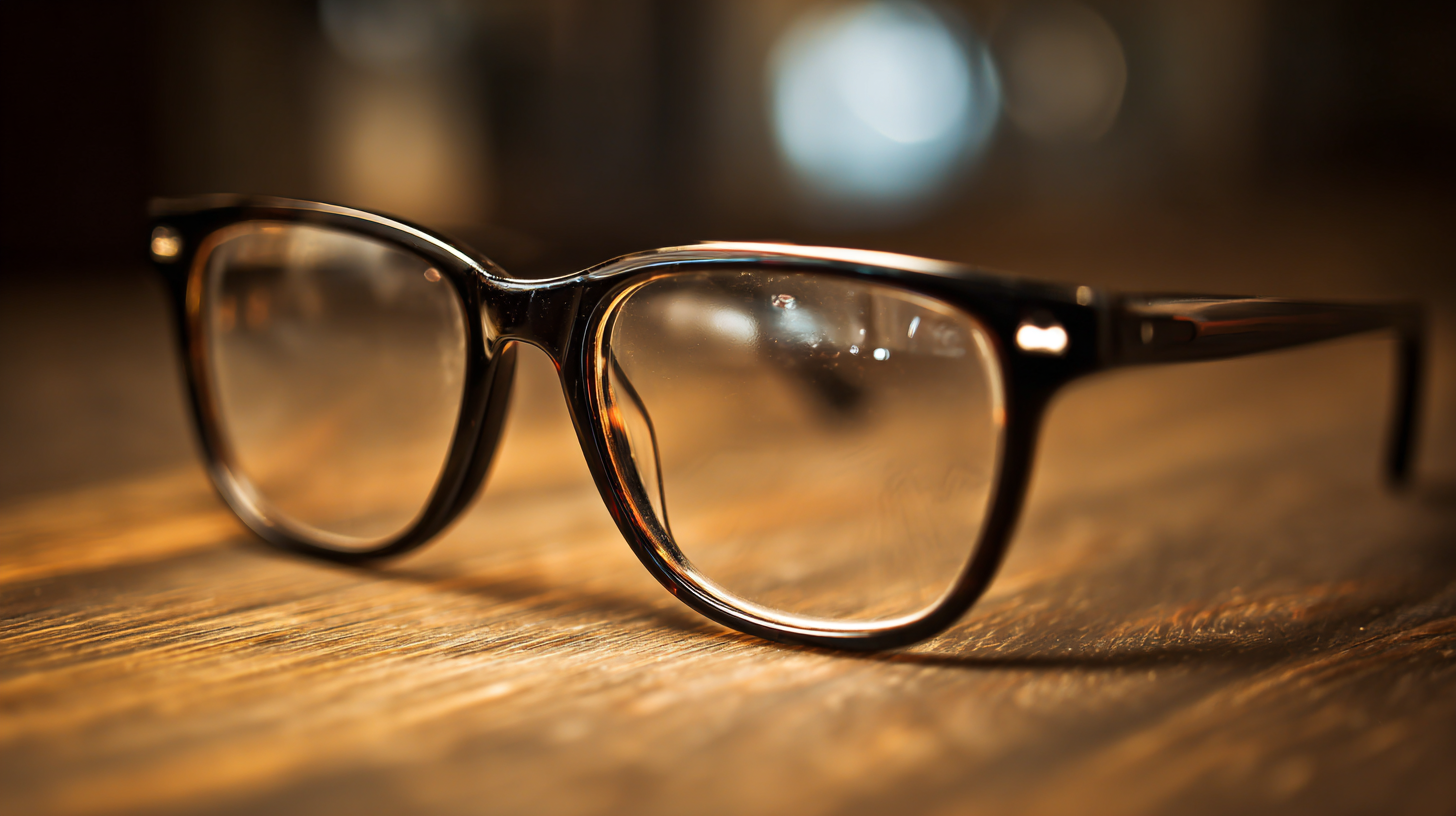In the rapidly evolving eyewear market, the selection of the right prescription lenses has become paramount for both optical professionals and consumers alike. According to the Vision Council's 2021 report, approximately 75% of adults in the U.S. require some form of vision correction, highlighting the increasing demand for tailored eyewear solutions. As technology advances, new materials and lens designs emerge, enabling enhanced functionality and comfort.

This blog aims to provide a comprehensive tutorial on mastering vision solutions, focusing on the intricacies involved in selecting the best prescription lenses tailored to individual needs. With insights into the latest innovations, consumer trends, and expert recommendations, we will navigate the often complex landscape of eyewear choices to empower readers in making informed decisions for clearer vision and enhanced quality of life.
 Choosing the right prescription lenses is essential for achieving optimal vision and comfort. When selecting lenses, the first key factor to consider is your specific vision needs. Whether you require single vision, bifocal, or progressive lenses, understanding your daily activities and how you use your eyesight can significantly influence your decision. For instance, if you spend prolonged hours on the computer, anti-reflective coatings may be beneficial to reduce glare and eye strain.
Choosing the right prescription lenses is essential for achieving optimal vision and comfort. When selecting lenses, the first key factor to consider is your specific vision needs. Whether you require single vision, bifocal, or progressive lenses, understanding your daily activities and how you use your eyesight can significantly influence your decision. For instance, if you spend prolonged hours on the computer, anti-reflective coatings may be beneficial to reduce glare and eye strain.
Another important aspect to consider is the lens material. Various materials offer different levels of durability, weight, and UV protection. Polycarbonate lenses are popular for their impact resistance, making them ideal for active lifestyles or children. Additionally, high-index lenses can be advantageous for those with strong prescriptions, as they are thinner and lighter, enhancing overall comfort. Lastly, don't overlook lens treatments like blue light filtering, which can help protect your eyes from harmful digital screens, ensuring your vision remains sharp and healthy.
When it comes to selecting the best prescription lenses, understanding the different types available is crucial. Prescription lenses are primarily categorized into single vision, bifocal, and progressive lenses, each serving distinct visual needs. Single vision lenses are designed for one field of vision, making them ideal for everyday activities like reading or driving. Bifocal lenses, on the other hand, accommodate both distance and near vision by incorporating two distinct optical powers, making them convenient for individuals who need assistance with both tasks without switching glasses.
Progressive lenses take it a step further, offering a seamless transition between multiple vision zones without the visible lines that bifocals have. This feature allows wearers to experience clear vision at all distances, making them an excellent choice for those with presbyopia. Additionally, lens materials and coatings can significantly enhance performance. Options like polycarbonate lenses are lightweight and impact-resistant, perfect for active lifestyles, while anti-reflective coatings reduce glare and improve visual clarity. Understanding these differences enables individuals to make informed decisions when selecting prescription lenses suited to their personal lifestyles and vision requirements.

When it comes to selecting prescription lenses, understanding different lens materials is crucial for ensuring optimal vision and comfort. The most common options include plastic, polycarbonate, and high-index lenses. Each material has its unique benefits tailored to various lifestyles and visual needs. For instance, polycarbonate lenses are not only lightweight but also impact-resistant, making them an ideal choice for children and active individuals.
Tips: If you require glasses for specific activities, consider the environment in which you'll be using them. For sports enthusiasts, polycarbonate lenses offer durability while remaining safe. On the other hand, if you have a strong prescription, high-index lenses are a great option as they are thinner and lighter, providing a more aesthetically pleasing look without compromising your visual clarity.
Additionally, polarization and photochromic options can enhance your lenses based on your routine. Polarized lenses reduce glare from surfaces like water or roads, perfect for those who spend time outdoors. Photochromic lenses adjust to changing light conditions, making them versatile for both indoor and outdoor settings. Be sure to assess your daily activities to select the lens material that complements your lifestyle while providing the necessary protection and comfort.
When selecting prescription lenses, the right coatings and treatments can significantly enhance visual clarity, comfort, and overall eye health. According to the Vision Council's report on optical coatings, nearly 90% of consumers are unaware of the impact that specialized lens treatments can have on their daily visual experiences. Anti-reflective coatings, for instance, are not just an aesthetic addition; they reduce glare and enhance light transmission. Studies highlight that lenses with anti-reflective treatments can improve vision quality by up to 30%, particularly in challenging lighting conditions like driving at night or working on digital screens.
In addition to anti-reflective coatings, blue light blocking technology has gained popularity due to the rise of digital device usage. The American Optometric Association states that prolonged exposure to blue light can cause digital eye strain, with more than 60% of adults reporting symptoms such as discomfort and blurred vision. Blue light blocking lenses filter harmful rays and can lead to a significant reduction in eye strain, as evidenced by a study published in the Journal of Optometry, where users reported a 37% improvement in comfort during screen time after using such lenses. By understanding and utilizing these coatings and treatments, individuals can take proactive steps in mastering their vision solutions.
When it comes to selecting prescription lenses, comfort and clarity are paramount. Choosing the right lenses starts with understanding your specific vision needs. Make sure to consult with your eye care professional about your typical daily activities, as this will help them recommend lenses tailored to your lifestyle. For instance, if you spend long hours at a computer, blue light filtering lenses can significantly reduce eye strain and improve your comfort throughout the day.
Another key factor in maximizing comfort is the fit of your lenses. Ensure your lenses are aligned properly with your pupils for optimal visual acuity. Additionally, consider the frame style and size, as these can greatly affect how your lenses perform. For those who wear multifocal lenses, it’s crucial to get the right measurements to minimize distortions when transitioning between different visual zones. Always remember to prioritize both comfort and functionality, as the right combination will enhance your overall visual experience.

